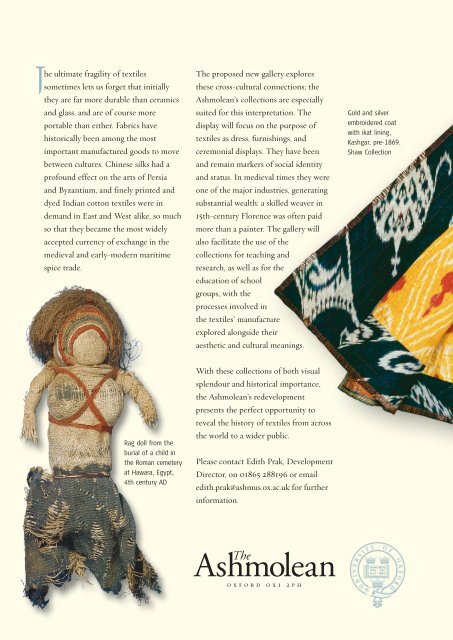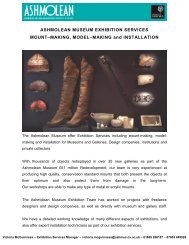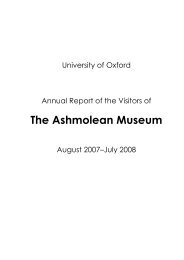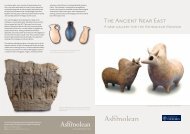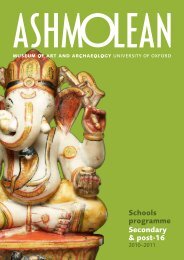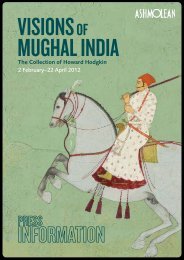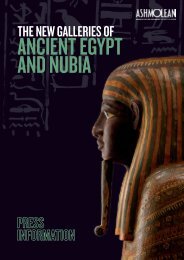Textiles Gallery - The Ashmolean Museum
Textiles Gallery - The Ashmolean Museum
Textiles Gallery - The Ashmolean Museum
You also want an ePaper? Increase the reach of your titles
YUMPU automatically turns print PDFs into web optimized ePapers that Google loves.
<strong>The</strong> ultimate fragility of textiles<br />
sometimes lets us forget that initially<br />
they are far more durable than ceramics<br />
and glass, and are of course more<br />
portable than either. Fabrics have<br />
historically been among the most<br />
important manufactured goods to move<br />
between cultures. Chinese silks had a<br />
profound effect on the arts of Persia<br />
and Byzantium, and finely printed and<br />
dyed Indian cotton textiles were in<br />
demand in East and West alike, so much<br />
so that they became the most widely<br />
accepted currency of exchange in the<br />
medieval and early-modern maritime<br />
spice trade.<br />
<strong>The</strong> proposed new gallery explores<br />
these cross-cultural connections; the<br />
<strong>Ashmolean</strong>’s collections are especially<br />
suited for this interpretation. <strong>The</strong><br />
display will focus on the purpose of<br />
textiles as dress, furnishings, and<br />
ceremonial displays. <strong>The</strong>y have been<br />
and remain markers of social identity<br />
and status. In medieval times they were<br />
one of the major industries, generating<br />
substantial wealth: a skilled weaver in<br />
15th-century Florence was often paid<br />
more than a painter. <strong>The</strong> gallery will<br />
also facilitate the use of the<br />
collections for teaching and<br />
research, as well as for the<br />
education of school<br />
groups, with the<br />
processes involved in<br />
the textiles’ manufacture<br />
explored alongside their<br />
aesthetic and cultural meanings.<br />
Gold and silver<br />
embroidered coat<br />
with ikat lining,<br />
Kashgar, pre-1869.<br />
Shaw Collection<br />
Rag doll from the<br />
burial of a child in<br />
the Roman cemetery<br />
at Hawara, Egypt,<br />
4th century AD<br />
With these collections of both visual<br />
splendour and historical importance,<br />
the <strong>Ashmolean</strong>’s redevelopment<br />
presents the perfect opportunity to<br />
reveal the history of textiles from across<br />
the world to a wider public.<br />
Please contact Edith Prak, Development<br />
Director, on 01865 288196 or email<br />
edith.prak@ashmus.ox.ac.uk for further<br />
information.<br />
<strong>Ashmolean</strong><br />
<strong>The</strong><br />
oxford ox1 2ph


